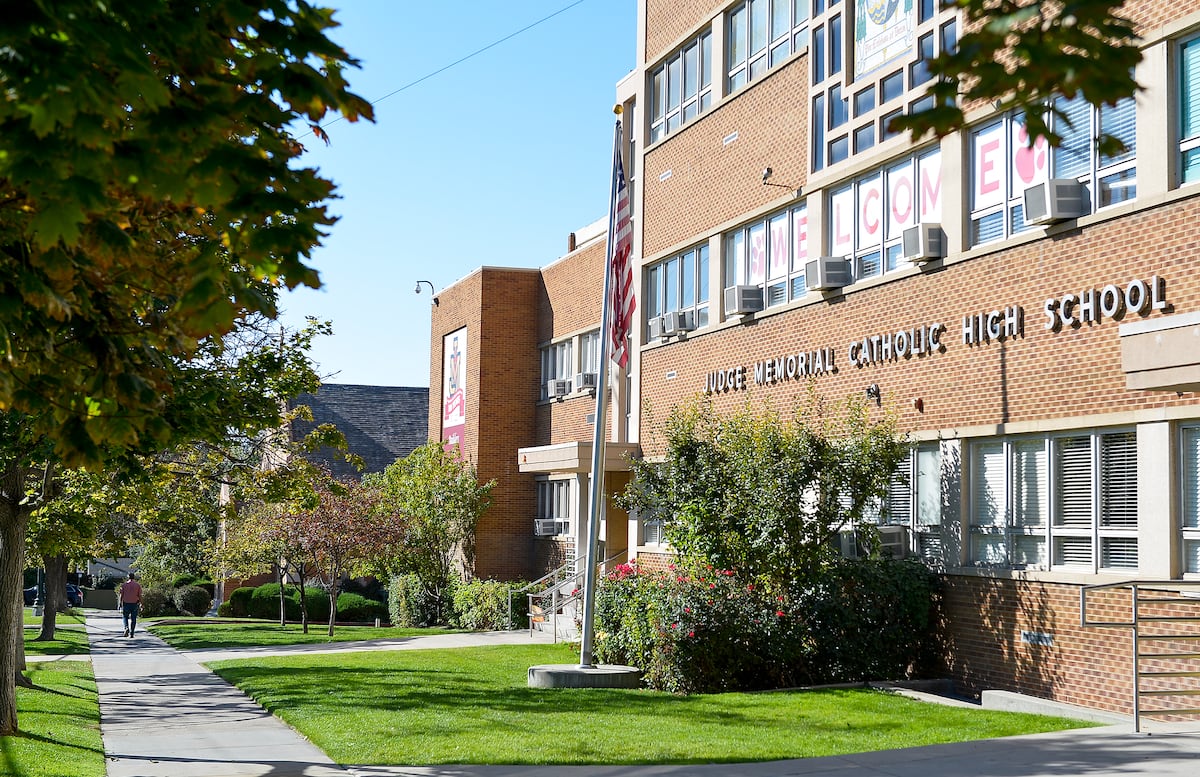
Utah’s school voucher program, still embroiled in a constitutional battle, is back for a second year — this time with more students, stricter spending rules and less money for homeschooled children.
More than 14,000 students were awarded scholarships for the 2025–26 school year through the state’s $100 million “Utah Fits All” program, according to Odyssey, the organization the state hired to manage it.
The taxpayer-backed program, which has seen massive changes since it first launched last fall, grants students scholarships to attend a private school or to cover homeschooling expenses.
In the program’s first year, the 2024-25 school year, roughly 10,000 students each received an $8,000 scholarship. The money could be spent on a broad range of educational expenses — including homeschooling supplies, private school tuition and extracurricular activities — with few limitations.
But after the passage of HB455 in March, there is no longer a flat scholarship amount, and extracurricular and physical education expenses are now capped at 20% each of a student’s total scholarship amount.
Students attending private schools still receive the full $8,000. However, homeschoolers between the ages of 5 and 11 now receive $4,000, while those between 12 and 18 qualify for $6,000.
About half of this year’s voucher recipients are homeschooled, with the other half attending private schools, according to Odyssey. That’s a significant shift from last year, when 80% of students were “home-based learners,” lawmakers have said.
Of the roughly 7,500 homeschoolers, about one-third received a $6,000 scholarship, while the remaining (about 5,000) received $4,000, according to Odyssey.
About $40 million has already been spent, according to Odyssey officials. Most of that is private school tuition, but textbooks, curriculum and other instructional materials are other common purchases, officials said.
In its first year, Utah Fits All prioritized students with a family income at or below 200% of the federal poverty level, amounting to about $60,000 for a family of four. Now that’s been changed to 300% of the federal poverty level, or about $96,000 for a family of four.
About 70% of new scholarship recipients are considered part of low-income households, according to Odyssey.
These changes are part of a recent overhaul to the 2023 law that created Utah Fits All. The Republican-led voucher proposal was pushed through in just 10 days during the 2023 legislative session.
At that point, it became the largest school voucher program in state history with an initial allocation of $42.5 million. The allocation was nearly doubled in 2024 to $82 million to accommodate additional interest. It was enough for 10,000 students to receive $8,000 each, with few restrictions on how the money could be spent.
But during the 2025 legislative session, less than a year after Utah Fits All officially launched, lawmakers said some of the purchases “did not align” with the law’s “educational purpose.” HB455 introduced new restrictions and capped extracurricular and physical education expenses at 20% each of a student’s total award.
Lawmakers said they wanted to ensure families were not spending the entirety of their scholarships on extracurriculars and physical education, which had previously been allowed.
In April, Third District Court Judge Laura Scott ruled the program was unconstitutional. Her decision came almost a year after the Utah Education Association, the state’s largest teachers’ union, sued the state, alleging the voucher program was an unconstitutional use of the state’s income tax dollars — which are reserved only for public education, higher education and services for people with disabilities.